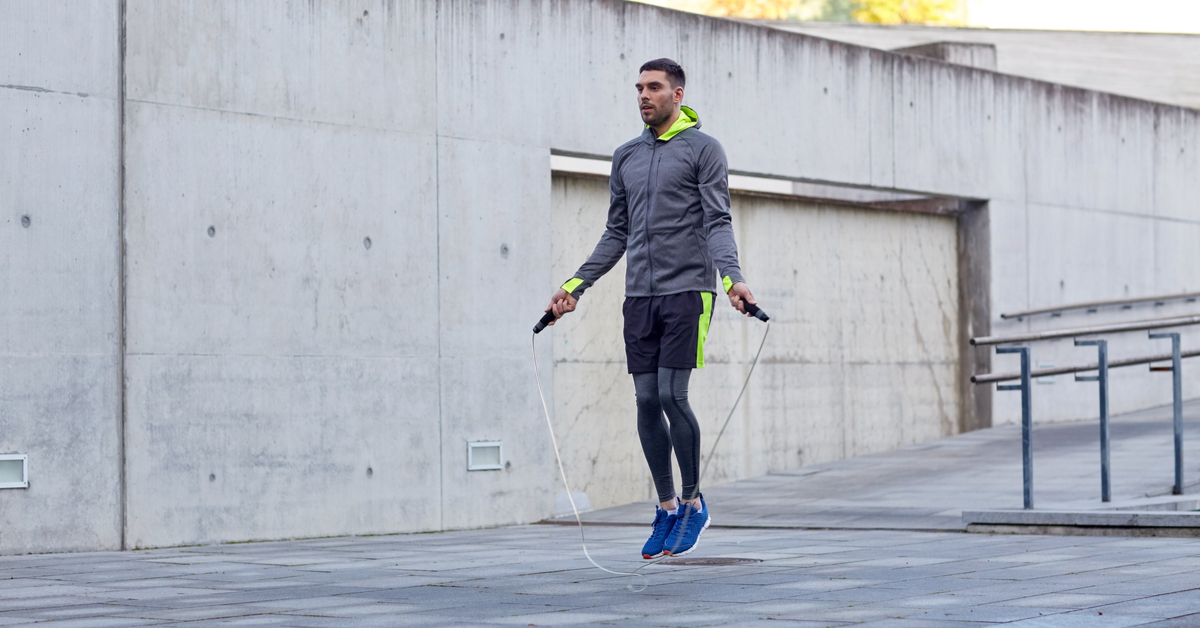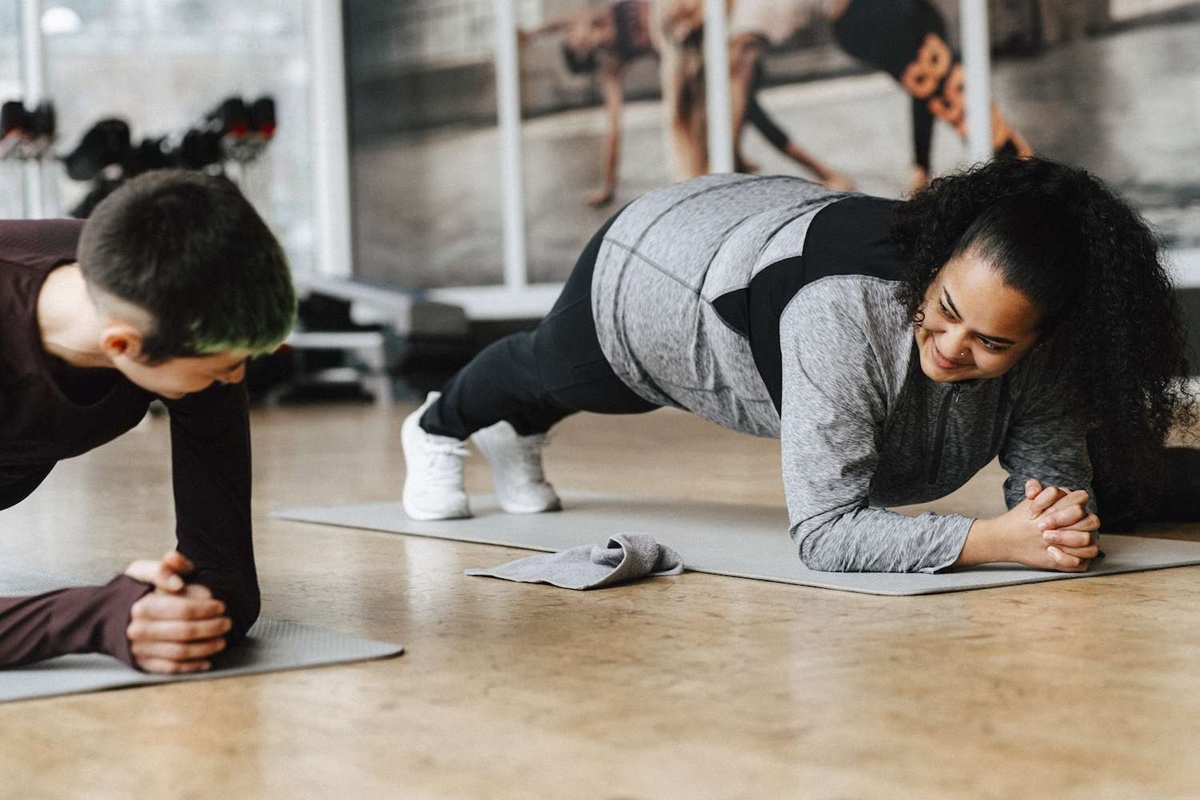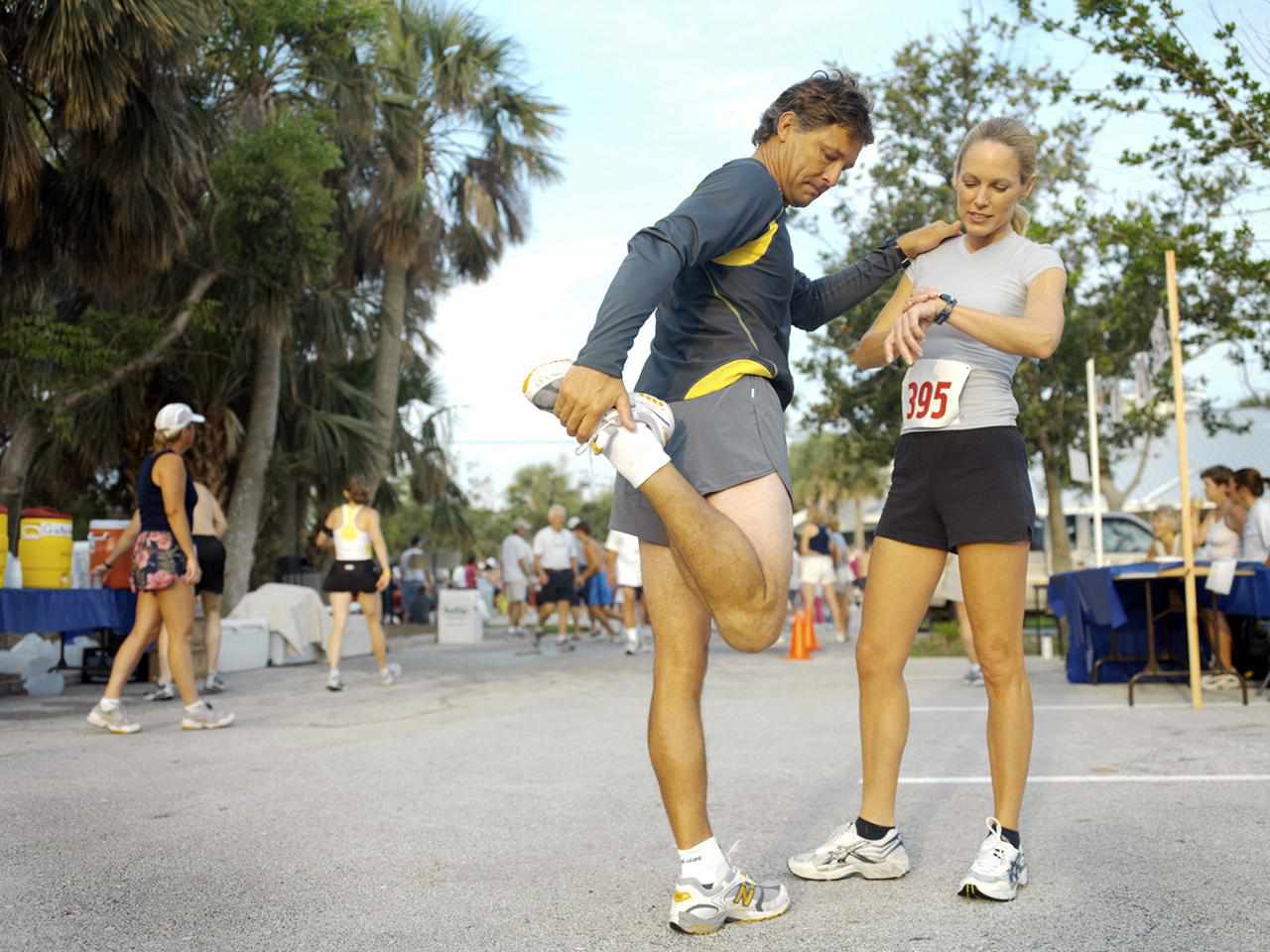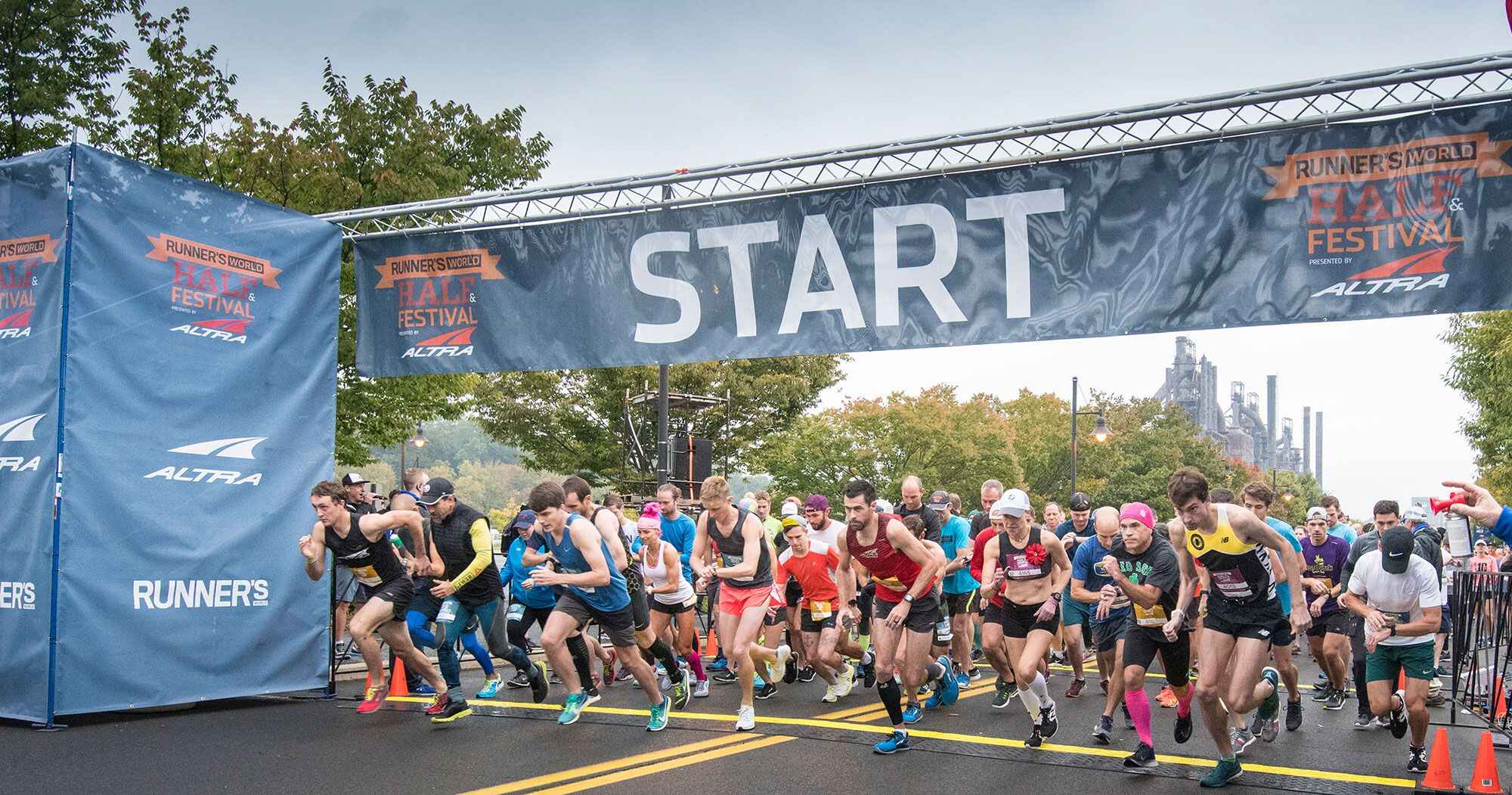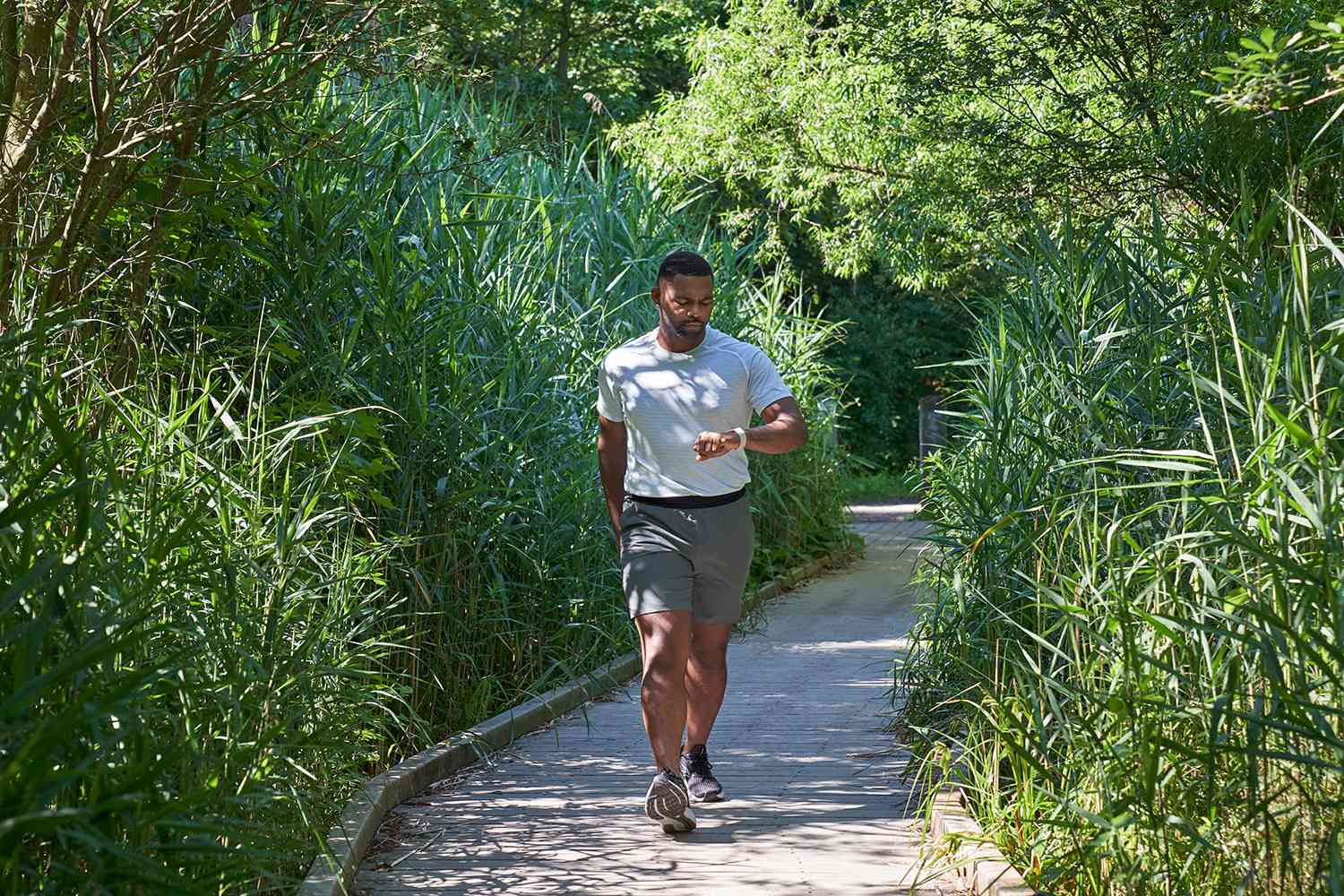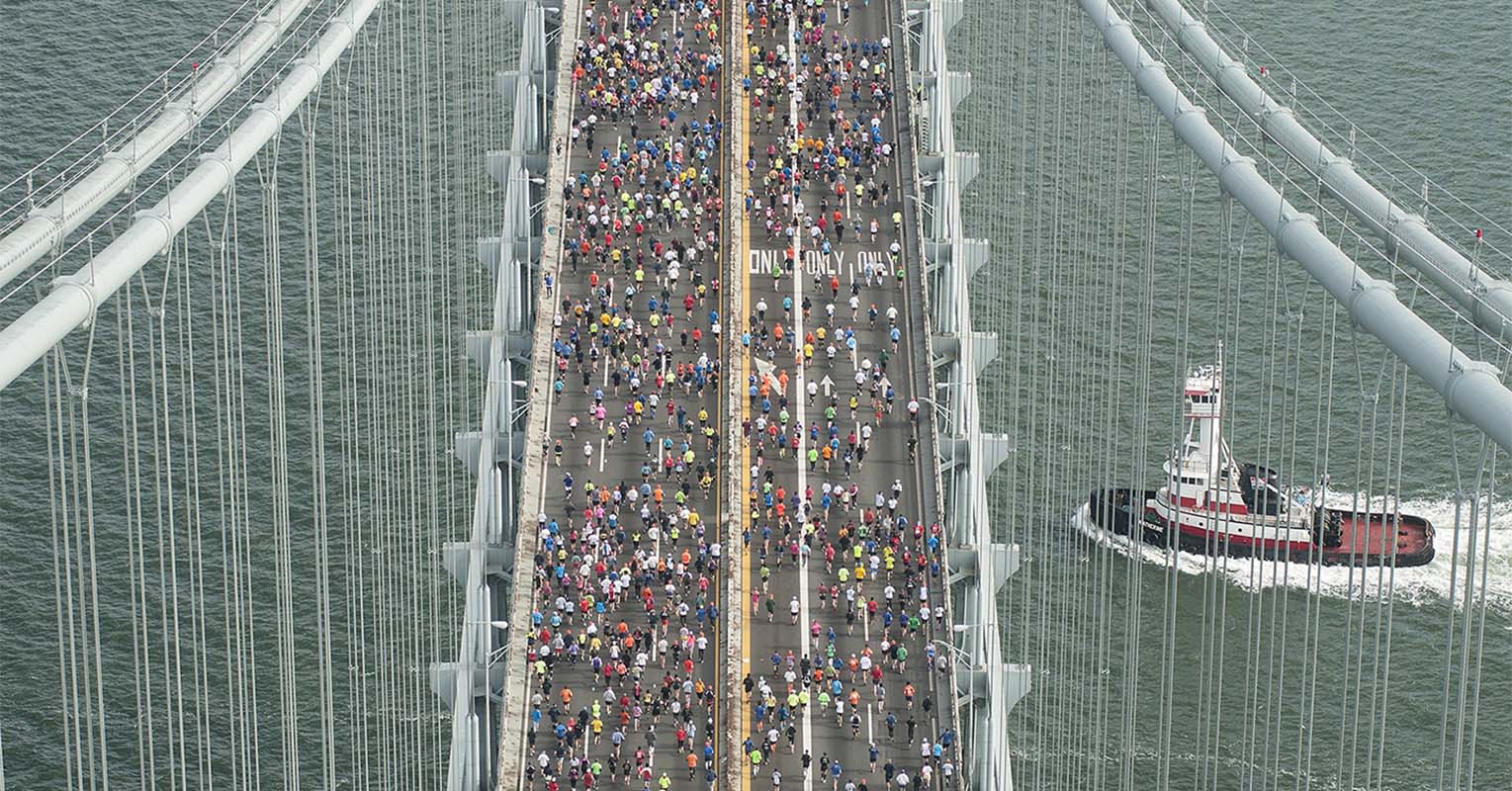Home>Misc>Featured>What Is A Useful Measurement And Predictor Of Distance Running
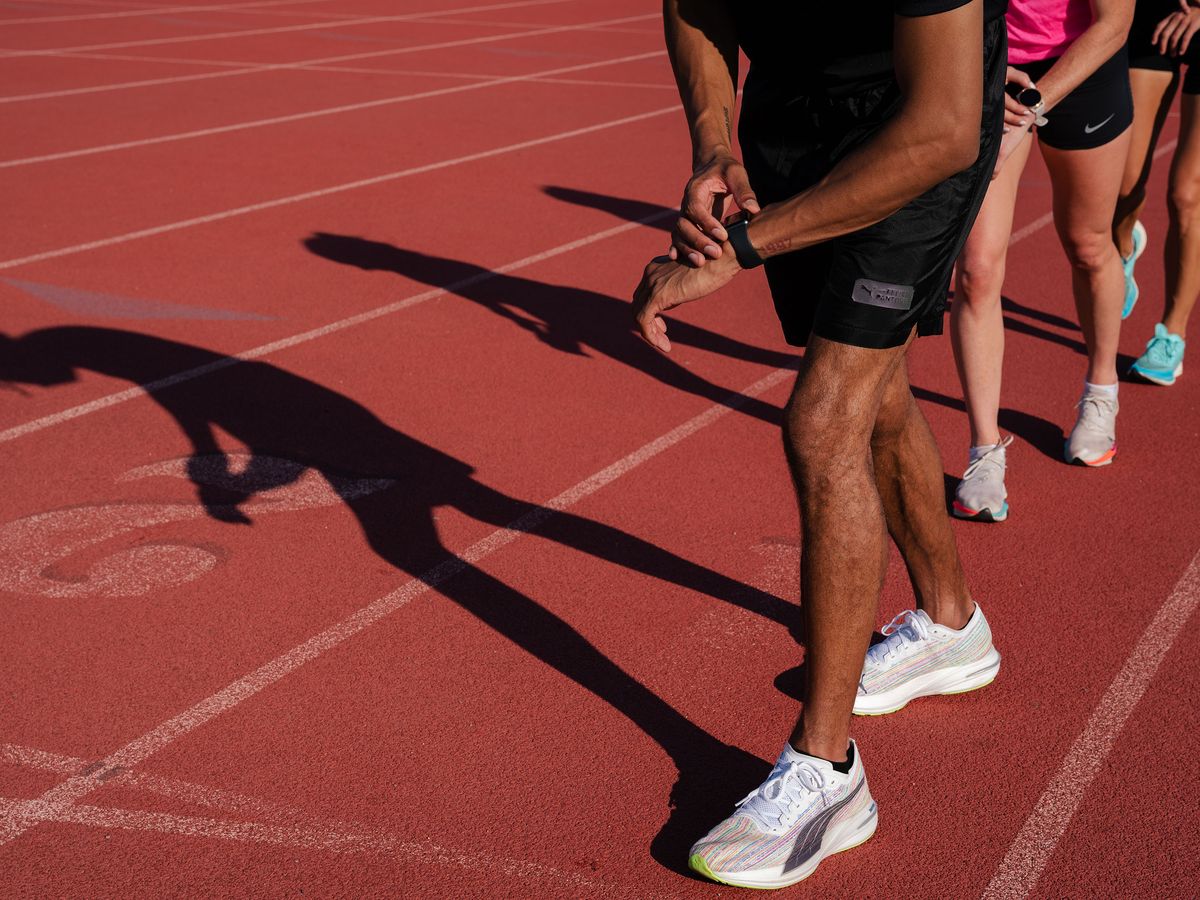

Featured
What Is A Useful Measurement And Predictor Of Distance Running
Modified: January 2, 2024
Learn about the importance of a featured measurement and predictor in distance running, and gain valuable insights for your training
Introduction
Welcome to the world of distance running, where athletes push their limits to cover long distances with speed and endurance. Whether you are a dedicated runner or simply curious about the sport, one question that frequently arises is: what is a useful measurement and predictor of distance running?
A useful measurement and predictor in the context of distance running refers to a metric or method that can accurately assess a runner’s abilities, track their progress, and provide insights into their potential performance. This measurement can provide valuable information when setting goals, analyzing training strategies, and assessing overall performance.
As distance running has evolved over the years, various measurements and predictors have been used to evaluate runners’ abilities. Traditional measurements include time, distance, pace, heart rate, and VO2 max (the maximum rate of oxygen consumption during exercise).
While these traditional measurements have been effective in providing some insights into a runner’s performance, they have certain limitations. For example, focusing solely on time or distance may not account for external factors such as weather conditions or elevation changes. Additionally, using heart rate or VO2 max as predictors can be influenced by a variety of individual factors and fail to capture the full picture of a runner’s potential.
However, recent advancements in technology and innovative approaches have paved the way for alternative methods of measuring and predicting distance running performance. These methods utilize a combination of data-driven analysis, machine learning algorithms, and sensor technology to provide a more comprehensive and accurate evaluation of a runner’s abilities.
The benefits of having a useful measurement and predictor in distance running are multifaceted. For athletes, it can provide crucial insights into their strengths and weaknesses, helping them tailor their training programs and improve their overall performance. Coaches can also benefit from these measurements and predictors, as they can provide objective data to support training decisions and track athlete progress over time.
Moreover, the application of useful measurements and predictors extends beyond individual athletes and coaches. Event organizers can leverage these tools to enhance race planning and design courses that challenge and engage participants. Sports institutions and governing bodies can use these insights to monitor the sport’s growth and track records, contributing to the overall development and promotion of distance running.
In this article, we will explore various traditional and alternative measurements and predictors of distance running. We will delve into the limitations of traditional methods and highlight the role of technology in creating more accurate and insightful assessments. Additionally, we will showcase real-life examples and case studies to illustrate the practical applications of these measurements and predictors.
So, tighten your laces and get ready to dive into the world of measuring and predicting distance running performance!
Definition and Importance of a Useful Measurement and Predictor of Distance Running
A useful measurement and predictor of distance running can be defined as a metric or method that provides accurate, reliable, and actionable information about a runner’s performance and potential. It goes beyond traditional measurements such as time and distance and incorporates various factors that can influence the outcome of a race or training session.
One of the key aspects of a useful measurement and predictor is its ability to provide objective data that can be used to analyze and compare performances across different runners and races. This allows athletes, coaches, and race organizers to make data-driven decisions and facilitate fair competition.
Distance running is a complex sport that involves a combination of physiological, biomechanical, and psychological factors. A useful measurement and predictor takes into account these multiple dimensions to create a holistic understanding of a runner’s abilities and potential areas for improvement.
The importance of a useful measurement and predictor in distance running is evident in its numerous applications. For athletes, it provides valuable insights into their progress, allowing them to set realistic goals and track their improvement over time. It also helps them identify their strengths and weaknesses, enabling them to focus on targeted training strategies to enhance their performance.
Coaches heavily rely on useful measurements and predictors to design personalized training plans for their athletes. By analyzing data such as running economy, lactate threshold, and biomechanical parameters, coaches can identify areas for improvement and prescribe specific exercises or adjustments to optimize a runner’s performance.
Race organizers also benefit from useful measurements and predictors in distance running. By utilizing data on runners’ performance levels and pacing strategies, they can design courses that challenge athletes while ensuring their safety and enjoyment. Accurate predictions of race times based on historical data and runner profiles help organizers plan logistics and create an engaging experience for participants and spectators alike.
Overall, a useful measurement and predictor of distance running plays a vital role in the advancement of the sport. It promotes fairness, transparency, and improvement by providing objective benchmarks and individualized insights. It empowers athletes to reach their full potential, coaches to optimize training programs, and race organizers to create memorable and well-executed events.
Traditional Measurements and Predictors of Distance Running
Traditionally, distance running performance has been evaluated using a variety of measurements and predictors that provide valuable insights into an athlete’s abilities. These traditional methods focus on factors such as time, distance, pace, heart rate, and VO2 max.
Time is perhaps the most basic and widely used measurement in distance running. It indicates how long it takes a runner to cover a specific distance, such as a 5K or marathon. Time can be used to compare performances across different races and track personal bests.
Distance is another fundamental measurement in distance running. It refers to the overall length of the course or training run. Distance is crucial for planning training schedules and setting goals, as it provides a tangible target for runners to work towards.
Pace is the measurement of how long it takes a runner to cover a specific distance, usually expressed in minutes per mile or kilometer. It is a valuable tool for managing effort and maintaining a consistent speed throughout a race.
Heart rate is often used as a predictor of performance in distance running. By monitoring the heart rate during different training sessions, runners and coaches can establish heart rate zones and determine optimal training intensities for improving endurance and cardiovascular fitness.
VO2 max, or maximum oxygen consumption, is another widely used predictor in distance running. It measures the maximum amount of oxygen a runner’s body can utilize during intense exercise. VO2 max is often correlated with an athlete’s aerobic capacity and is used to estimate their potential for endurance performance.
While these traditional measurements and predictors have their merits, they also have limitations. Focusing solely on time and distance may fail to account for external factors such as weather conditions, terrain, and elevation changes. Heart rate and VO2 max can be influenced by individual factors, making them less reliable for assessing overall performance potential.
Moreover, traditional measurements and predictors tend to provide static snapshots of performance, lacking a dynamic perspective. They may not capture the nuanced changes in performance that can occur over time, making it challenging to assess progress accurately.
Despite these limitations, traditional measurements and predictors still form an essential foundation in distance running. They provide valuable baseline data and serve as reference points for evaluating progress. However, as technology and data-driven approaches continue to advance, alternative methods have emerged to complement and enhance the traditional measurements and predictors in distance running.
Limitations of Traditional Measurements and Predictors
While traditional measurements and predictors have been widely used in distance running, they do come with certain limitations that can impact their accuracy and effectiveness in assessing an athlete’s performance and potential.
Firstly, relying solely on time and distance as measurements can overlook important factors that can influence performance. External conditions, such as weather, terrain, and elevation changes, can significantly impact a runner’s speed and endurance. Failing to account for these variables can lead to inaccurate assessments and predictions.
In addition, traditional measurements like heart rate and VO2 max can be influenced by various individual factors. Factors such as age, genetics, and training history can affect an athlete’s heart rate and oxygen consumption, making these predictors less reliable in determining overall performance potential.
Another limitation is the static nature of traditional measurements and predictors. They provide a snapshot of performance at a specific point in time, but fail to capture the dynamic changes that can occur over time. Performance improvements may not always be reflected accurately when relying solely on traditional metrics.
Furthermore, traditional measurements and predictors lack the ability to provide insights into the biomechanical aspects of distance running. Factors such as running economy, stride length, and cadence can significantly impact performance, but are not effectively captured by traditional measurements. This limits the comprehensive understanding of an athlete’s capabilities.
Lastly, traditional measurements and predictors often operate on a broad population level and may not account for individual differences. Athletes have unique physiological and psychological characteristics that can influence their performance potential. Using generalized predictions may not accurately reflect an athlete’s specific capabilities and may lead to suboptimal training strategies.
As distance running evolves and technology advances, these limitations become increasingly apparent. However, it is essential to recognize that traditional measurements and predictors still provide valuable insights and serve as a foundation for assessing performance. When used in conjunction with alternative methods and new technologies, these limitations can be mitigated, and a more comprehensive approach to measuring and predicting distance running performance can be achieved.
Alternative Measurements and Predictors of Distance Running
In recent years, advancements in technology and innovative approaches have led to the development of alternative measurements and predictors in distance running. These methods aim to provide a more comprehensive and accurate evaluation of a runner’s performance and potential.
One alternative measurement that has gained popularity is running economy. Running economy refers to the amount of oxygen consumed during running at a given submaximal pace. It is a measure of how efficiently a runner utilizes oxygen to maintain a certain speed. By analyzing running economy, coaches and athletes can identify areas for improvement and optimize energy expenditure, ultimately enhancing overall performance.
Cadence, or step rate, is another alternative measurement that has gained attention. It refers to the number of steps a runner takes per minute. Maintaining an optimal cadence has been linked to improved running efficiency and reduced risk of injury. By monitoring cadence, runners can adjust their stride length and rhythm to enhance performance and reduce the potential for overstriding.
Power-based measurements have also emerged as a valuable tool in distance running. By incorporating wearable sensors, such as running power meters, athletes can obtain real-time data on their power output. Power provides insights into the mechanical demands of running and can aid in optimizing pacing strategies and identifying areas for improvement.
In addition to these alternative measurements, various predictors have been developed using advanced analytics and machine learning algorithms. These predictors analyze multiple data points, such as historical race performances, training volumes, and physiological parameters, to create personalized predictions of an athlete’s future performance potential.
Some predictive models also take into account environmental factors, such as weather, terrain, and altitude, to provide more accurate race-time estimations. By incorporating these variables, runners and coaches can make informed decisions regarding race strategy and preparation.
Another emerging area in alternative measurements and predictors is psychological profiling. Understanding an athlete’s mindset, motivation, and mental preparedness can significantly impact their performance. By assessing psychological factors, such as self-confidence, focus, and resilience, coaches can tailor training approaches and mental conditioning techniques to maximize a runner’s potential.
These alternative measurements and predictors demonstrate the evolving nature of distance running. They offer athletes and coaches a broader range of data and insights to optimize training, improve performance, and make informed decisions.
While traditional measurements and predictors still hold value, incorporating these alternatives allows for a more comprehensive evaluation of an athlete’s abilities and potential for success in distance running.
Role of Technology in Developing New Measurements and Predictors
Technology has played a pivotal role in revolutionizing distance running by facilitating the development of new measurements and predictors. With the advent of innovative tools and devices, athletes and coaches now have access to a wealth of data and insights that were previously inaccessible.
One area where technology has had a significant impact is in the collection and analysis of biomechanical data. Wearable sensors, such as accelerometers and gyroscopes, enable the measurement of a runner’s stride length, cadence, ground contact time, and vertical oscillation. This data provides valuable insights into an athlete’s running technique and efficiency, allowing for targeted improvements and injury prevention.
Furthermore, GPS-enabled watches and smartphone apps have made it easier than ever to track and analyze running performance. Athletes can now monitor their pace, distance, and elevation in real-time, enabling more accurate training programs and pace management during races. Additionally, these technologies allow for the mapping and visualization of routes, facilitating effective course planning and strategizing.
The use of heart rate monitors and wearable fitness trackers has also become commonplace in distance running. These devices provide real-time heart rate data, allowing athletes and coaches to monitor training intensities and recovery periods. Heart rate variability (HRV) is another valuable metric that can be assessed using these devices, providing insights into an athlete’s readiness for training and recovery.
Technology has also facilitated the development of predictive models and algorithms that leverage vast amounts of data to make accurate performance predictions. Machine learning algorithms analyze historical race results, physiological parameters, and training volumes to create personalized predictions of an athlete’s future performance potential. This allows athletes and coaches to set realistic goals and make informed decisions about training strategies.
In addition to these advancements, virtual training platforms and virtual reality (VR) technologies have emerged as powerful tools in distance running. These platforms simulate various running scenarios, allowing athletes to train in virtual environments that mimic race conditions. Athletes can compete against virtual avatars or even other athletes, enhancing motivation and simulating race-day experiences.
Overall, technology has had a profound impact on the development of new measurements and predictors in distance running. It has provided athletes and coaches with access to valuable data and insights that can optimize training, improve performance, and enhance overall preparation. As technology continues to advance, we can expect further innovations in the field, pushing the boundaries of what is possible in distance running.
Benefits and Applications of Using a Useful Measurement and Predictor in Distance Running
The utilization of a useful measurement and predictor in distance running offers numerous benefits and practical applications for athletes, coaches, race organizers, and the overall advancement of the sport.
For athletes, a useful measurement and predictor provides valuable insights into their performance and potential. It allows them to set realistic goals based on objective data and track their progress over time. By identifying areas for improvement, athletes can tailor their training programs to optimize their strengths and address weaknesses. This targeted approach enhances overall performance and increases the likelihood of achieving personal bests.
Coaches heavily rely on useful measurements and predictors to design effective and personalized training plans for their athletes. By analyzing data such as running economy, stride length, heart rate, and other performance indicators, coaches can identify specific areas for improvement. This data-driven approach helps optimize training intensity, volume, and recovery strategies, leading to enhanced performance and reduced risk of injury.
Race organizers can benefit from useful measurements and predictors in various ways. By analyzing race data from previous events, organizers can better understand pacing profiles, predict finish times, and design courses that challenge runners while ensuring their safety. Accurate predictions based on historical data and athlete profiles also facilitate efficient wave-starts and aid in drafting competitive fields, resulting in engaging and well-executed races.
Moreover, the applications of useful measurements and predictors extend beyond individual athletes and coaches. Sports institutions and governing bodies can leverage these insights to monitor the growth and development of distance running as a sport. They can track records, analyze trends, and identify emerging talents, aiding in the overall promotion and advancement of the discipline.
Another benefit is the ability to facilitate fair and competitive events. Useful measurements and predictors provide objective benchmarks that promote transparency and equal opportunities for all participants. This ensures that races are conducted on a level playing field, allowing athletes to maximize their potential without unfair advantages.
Furthermore, the application of useful measurements and predictors is not limited to elite athletes and organized races. Recreational runners can also benefit from these tools, as they provide motivation, guidance, and a sense of accomplishment. Personalized predictions and feedback enable recreational runners to establish realistic goals and experience the satisfaction of tracking their progress.
Overall, the benefits and applications of using a useful measurement and predictor in distance running extend to athletes, coaches, race organizers, and the sport as a whole. By providing objective data and insights, these measurements and predictors enhance performance, optimize training, promote fair competition, and contribute to the growth and development of distance running.
Case Studies and Examples of Successful Measurement and Prediction Methods
Several case studies and examples highlight the successful implementation of measurement and prediction methods in distance running. These examples demonstrate the effectiveness and practical applications of alternative approaches in optimizing performance and achieving success.
One notable case study is the use of running economy as a measurement tool. Through careful analysis of running economy data, coaches have been able to identify specific areas for improvement in a runner’s technique or training approach. By providing targeted feedback and implementing corrective exercises, coaches have successfully enhanced running economy, leading to improved performance and race outcomes.
Another successful example is the utilization of advanced analytics and machine learning algorithms to create personalized predictive models. By analyzing historical race data, physiological parameters, and training volumes, these models accurately predict an athlete’s future performance potential. This allows athletes and coaches to set realistic goals, adjust training strategies, and make informed decisions about race pacing and preparation.
The integration of wearable sensor technology has also proven to be successful in enhancing distance running performance. By measuring biomechanical parameters, such as stride length, cadence, and ground contact time, athletes and coaches can identify inefficiencies and make adjustments to running form. This targeted approach has resulted in improved running economy, reduced risk of injury, and enhanced overall performance.
Furthermore, the application of technology in race planning and course design has yielded successful outcomes. By analyzing historical race data and athlete profiles, race organizers can accurately predict finish times and create wave starts that minimize congestion and create fair competition. Additionally, incorporating weather and terrain data allows organizers to design engaging and challenging courses that showcase both the scenic beauty and technical aspects of distance running.
Virtual training platforms and virtual reality (VR) technologies have also proven to be successful measurement tools. By simulating race conditions in virtual environments, athletes can train in a realistic setting that mimics the challenges they will face on race day. This immersive experience improves mental preparedness and allows athletes to practice pacing strategies and visualize techniques, leading to improved performance when it matters most.
These case studies and examples highlight the successful implementation of measurement and prediction methods in distance running. Through the integration of advanced technologies, data-driven analytics, and personalized feedback, athletes and coaches have achieved significant improvements in performance, injury prevention, and overall race outcomes.
As technology continues to advance, we can expect further exploration and innovation in the field of measurement and prediction methods, further enhancing the capabilities of distance runners and pushing the boundaries of human performance.
Conclusion
Distance running is a challenging and dynamic sport that requires a comprehensive and accurate assessment of an athlete’s performance and potential. Traditional measurements and predictors have long been utilized in the sport, but they come with limitations that may not give a complete picture of a runner’s abilities. However, with advancements in technology and innovative approaches, new measurements and predictors have emerged, providing valuable insights and enhancing performance in distance running.
Alternative measurements such as running economy, cadence, and power, along with predictors utilizing machine learning algorithms and advanced analytics, have revolutionized the way athletes and coaches approach training and competition. These new methods allow for a more personalized and targeted approach to improving performance, reducing the risk of injury, and setting realistic goals.
Additionally, the role of technology cannot be understated in the development of these new measurements and predictors. Wearable sensors, GPS watches, and virtual training platforms have enabled the collection and analysis of valuable data, providing athletes and coaches with real-time feedback and a more comprehensive understanding of their performance.
The integration of these useful measurements and predictors not only benefits individual athletes and coaches but also race organizers, sports institutions, and the sport of distance running as a whole. They enhance the fairness and competitiveness of events, facilitate race planning and design, and contribute to the overall growth and advancement of the sport.
In conclusion, the adoption of useful measurements and predictors in distance running has transformed the way athletes train, compete, and achieve success. By leveraging technology, analyzing data, and embracing innovative approaches, athletes and coaches have the tools to reach their full potential. As technology continues to advance, we can expect further advancements in measurements and predictors, allowing for even greater insights and performance improvements in the exciting world of distance running.
